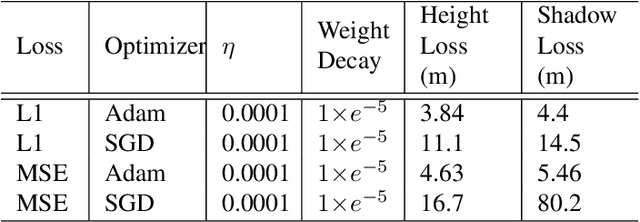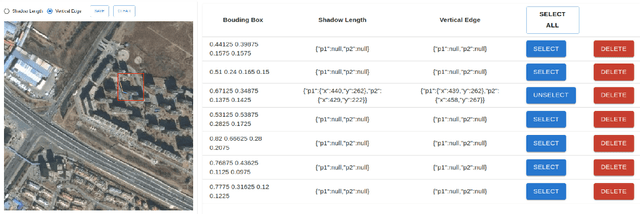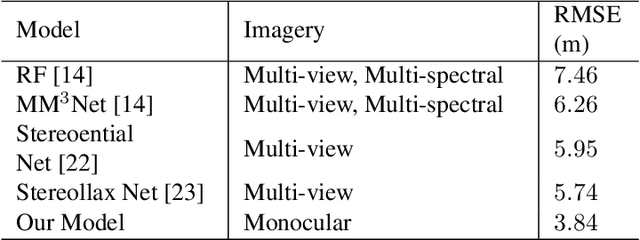Sana Jabba
Building Height Estimation Using Shadow Length in Satellite Imagery
Nov 14, 2024



Abstract:Estimating building height from satellite imagery poses significant challenges, especially when monocular images are employed, resulting in a loss of essential 3D information during imaging. This loss of spatial depth further complicates the height estimation process. We addressed this issue by using shadow length as an additional cue to compensate for the loss of building height estimation using single-view imagery. We proposed a novel method that first localized a building and its shadow in the given satellite image. After localization, the shadow length is estimated using a regression model. To estimate the final height of each building, we utilize the principles of photogrammetry, specifically considering the relationship between the solar elevation angle, the vertical edge length of the building, and the length of the building's shadow. For the localization of buildings in our model, we utilized a modified YOLOv7 detector, and to regress the shadow length for each building we utilized the ResNet18 as backbone architecture. Finally, we estimated the associated building height using solar elevation with shadow length through analytical formulation. We evaluated our method on 42 different cities and the results showed that the proposed framework surpasses the state-of-the-art methods with a suitable margin.
 Add to Chrome
Add to Chrome Add to Firefox
Add to Firefox Add to Edge
Add to Edge